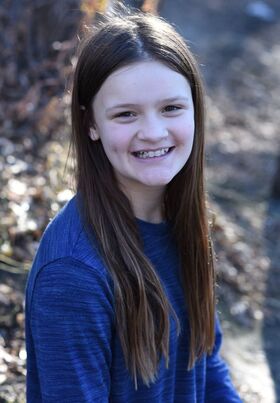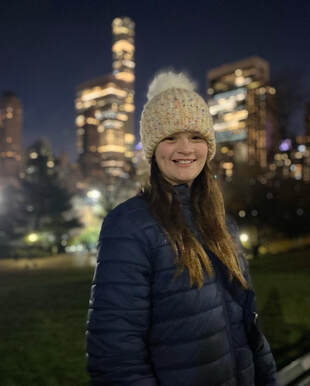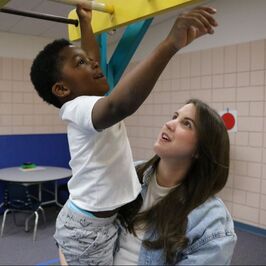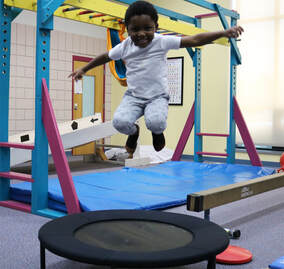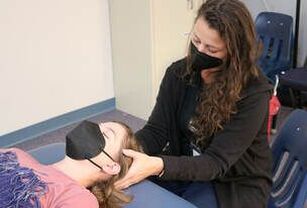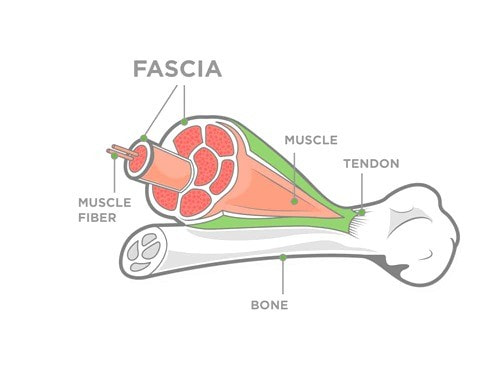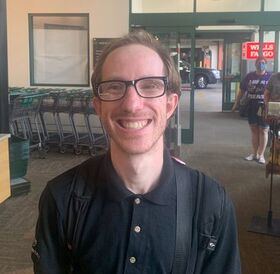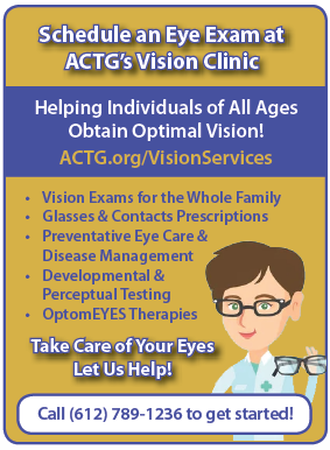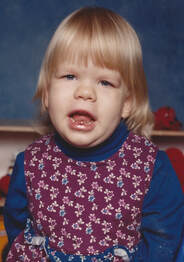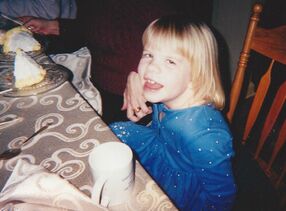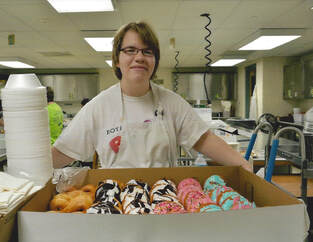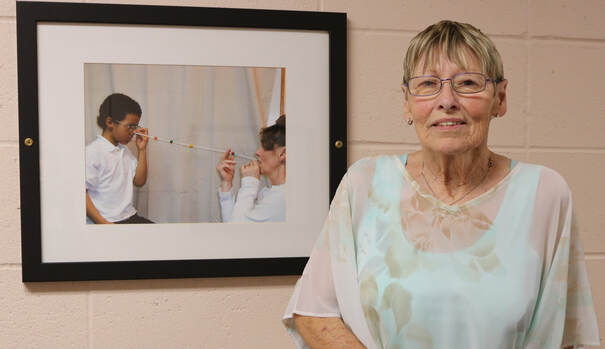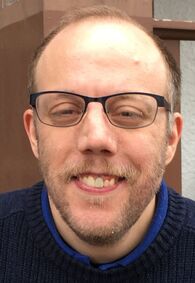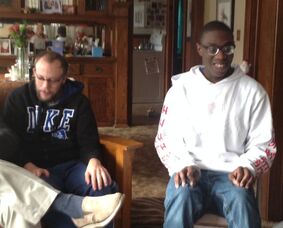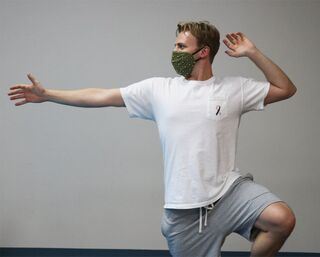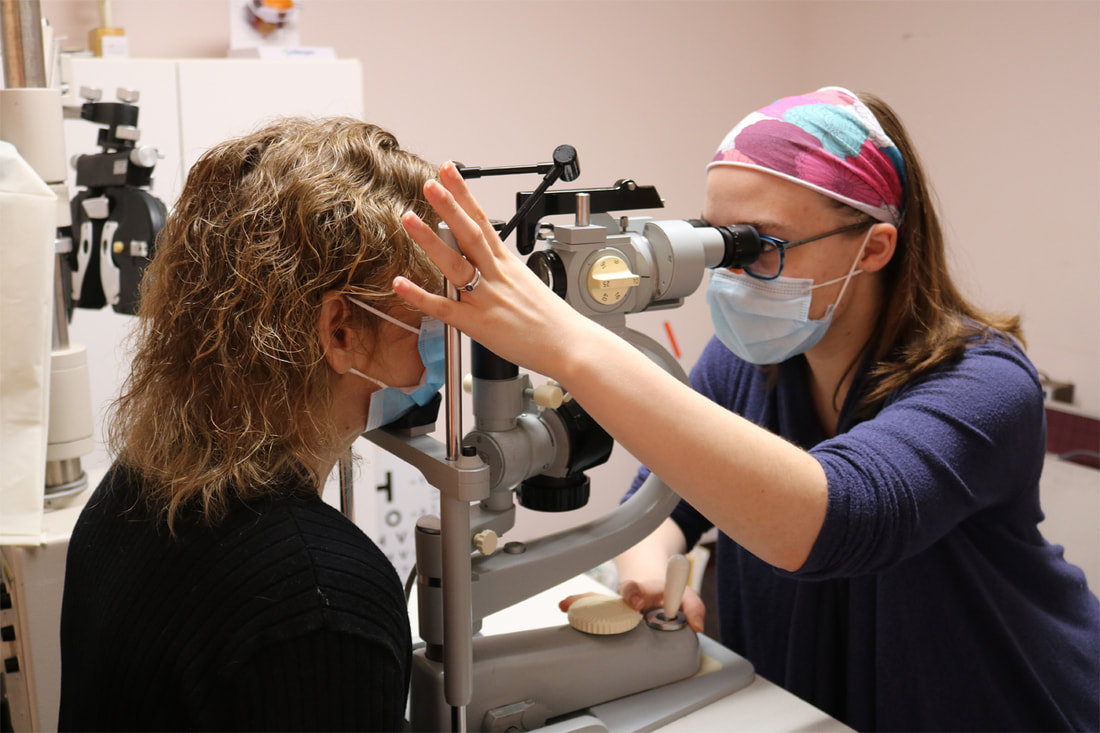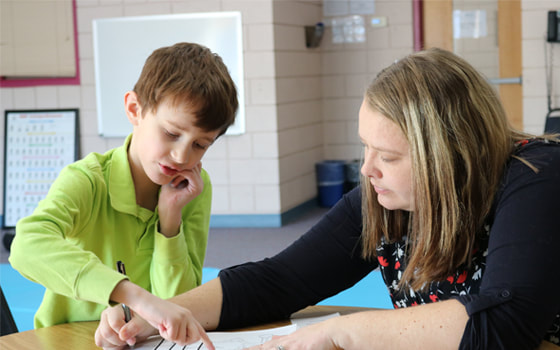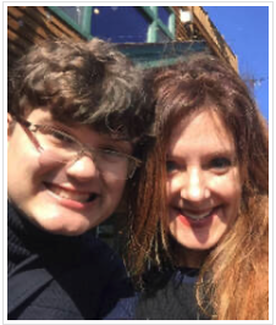|
Hadley is a shy but sweet teenager who loves her family, friends and especially her dog, Buddy. From the beginning, school hasn’t come easy to her. Her parents first noticed something was amiss in second grade when they’d try to do homework with her and she’d cry and beg not to do it. Her writing looked more like a toddler’s handwriting and she couldn’t seem to stay focused on the class material. Her parents were worried – they knew she was smart, yet she struggled in virtually every subject in school, especially reading and math. They were determined to get her the help she needed and began searching for answers. A full neurological evaluation yielded diagnoses of ADHD and Dyslexia.
In 7th grade, her parents made the difficult decision to pull her from the school she knew and send her to a private school that specialized in students with learning challenges. But after two years, they hadn’t seen much progress. Says her mother, Ali: “A lot of people told us that this school was going to change her life, but it hasn’t.” “At that point, we’d tried everything with very little improvement,” said Ali. “I had an epiphany that something had to be off in her brain that needs to be fixed at a base level. It felt as if her neurons weren’t firing, pathways were blocked. I couldn’t shake this belief that we had to find the root cause. Otherwise, we will just keep spinning our wheels, losing thousands of dollars in the process.” Not knowing what else do to, Ali turned to Google. “As I went down the Dr. Google rabbit hole, I learned about primitive reflex integration, something I’d never even heard of but sounded like it could be causing some of Hadley’s challenges. Eventually I came across A Chance To Grow.” She immediately emailed Kelly Pittman, Director of ACTG’s Neurotechnology services, and during their first discussion, she knew that she was on the right track. “Talking to Kelly that first time was so refreshing because she totally understood our plight, having dealt with this type of stuff both as a parent and professionally.” As she learned more about ACTG’s clinical services, Ali was shocked and disappointed that she’d never heard of the services that ACTG offers. “The holistic, natural, brain-based therapy made total sense to me. For the first time ever, I knew that we’d found a better path.” "For the first time ever, I knew that we’d found a better path.” First, Hadley began neurofeedback with Kelly to help her brain self-regulate more efficiently. “It’s very common for people to get stuck in a stress response on a daily basis,” says Kelly. “This can show up in a child’s behavior as “hypo” or “hyper,” either shut down or over-aroused. Neurofeedback addresses this, often improving social and emotional regulation along with academic skills.” Next up is Neuro Integrative therapy, an approach developed at ACTG that combines several interventions that collectively promote brain growth and social, physical and emotional development through purposeful movement. The goal is to establish efficient neurological connections between the brain and the systems of the body to improve higher-level functioning. Kelly also recommended that Hadley undergo functional auditory and vision screenings. These differ from the routine screenings where, when a child passes, it’s assumed that their hearing or vision is fine. But functional problems with eyes and ears that can seriously impede the ability to learn are not picked up by routine screenings. Says Ali, “I was floored to learn that vision played into learning as much as it does. We knew Hadley could read, but she still couldn’t comprehend. Now I know. Learning is 80% visual and if the eyes are misaligned or not tracking correctly, it can often be mistaken for ADHD and Dyslexia.” Hadley had a functional eye screening and sure enough, ACTG‘s testing found her eyes were a big part of her challenges. Due to her misaligned eyes, she’d skip words which heavily affected her comprehension. “As ACTG explained to me, she was having to work so hard just to stay aligned in reading words and lines, her brain wasn’t able to comprehend what she was reading. Hence, the enormous academic struggles. There is even speculation that Dyslexia might be a misdiagnosis all together.” Hadley was also diagnosed with an auditory processing disorder (APD), which affects the ability to understand speech. Someone with APD might be able to hear well, but the auditory input is not correctly interpreted by the brain.
Although happy that she finally has answers that make sense, she wonders why it took her so long to find ACTG. “Never once in all of these years did a doctor say anything about brain-based therapies,” Ali says, the doctors just recommended medication. “I don’t understand why the medical community couldn’t or wouldn’t tell me about these other therapies and methods.” Hadley is 13 now, and if Ali and her husband had known about ACTG and their brain-based approach years ago, it might have changed the trajectory of her life. "I hope anyone who is on their own neuro-diverse struggle finds ACTG. It’s the best-kept secret and I want everyone to know about it." Now Ali wants to make sure that people who have neuro-diverse family members are aware of it. “I hope anyone who is on their own neuro-diverse struggle finds ACTG. It’s the best-kept secret and I want everyone to know about it. They truly want to help Hadley reach her full potential and I’m confident we’re in the right spot now, but even more than confident, I am so, so grateful.”
> Click here to be redirected back to our Spring '23 Newsletter
0 Comments
A Chance To Grow is a special place for many reasons, not the least of which is our Turnquist Child Enrichment Center, that primarily serves young families that require county assistance to receive childcare services.
Turnquist consists of age-specific rooms for infants, toddlers and on up to preschool age. In addition to implementing a developmentally appropriate curriculum, Turnquist teachers are responsible for completing developmental assessments for each child every two months. “Most times, we [the teachers] are the first to notice any social, verbal or motor skill issues,” says Sami, an infant room teacher of three years. “If a child isn’t meeting certain developmental milestones, we notify the parents that we’ve identified an issue and recommend they be referred to our Clinics team. Parents are almost always OK with an observation, and quite often say that they’ve seen the same issues at home, but didn’t know how to address them.” Depending on the nature of the referral, an Occupational Therapist (OT) or Speech-Language Pathologist (SLP) will observe the child in their classroom, alongside the Turnquist teacher. This provides a safe, familiar space for the child, and allows our therapists and teachers the opportunity to discuss whether evaluation and treatment would best address the child’s needs. Once an evaluation is complete and a care plan is established, a child will receive 1-3 therapy sessions per week, with the teacher available to receive additional instructions from the therapist about ways to continue the treatment. The teacher also serves as the intermediary between therapist and parent, providing progress reports and suggestions for therapy at home. “Working with the therapists is really nice,” says Sami, “especially when they show us how to do certain techniques. It makes a big difference that the teachers know how to help them, not just the therapists, because that means the child is getting the therapies they need all day, not just during one or two sessions. Parents really appreciate the convenience, they don’t have to take time out of their work days and it makes their lives a lot easier.” Michelle Koyama, MA OTR/L, ACTG’s Assistant Director of Clinical Services, knows that this process is only possible with great communication from everyone involved. “Normally, these families wouldn’t have access to additional therapies, but we’re able to take that barrier away because we are able to fluidly communicate with the teachers in Turnquist,” she says. “We have a shared philosophy and see things through a developmental and trauma-informed model. We’re on the same page so it makes our communication very easy.” Presently, 20 out of 32 children at Turnquist are receiving OT or SLP services. The need for these services has grown substantially in the wake of the COVID pandemic, and has often led to other areas of concern, including vision and auditory issues. Luckily, we offer vision and hearing screenings as well, and give parents the option to allow their child’s Turnquist teacher to represent their child in the exam room. Not only does this allow for the most optimal treatment schedule for the child (and parent), it provides our doctors with additional insight into their development, because they’re hearing it directly from the person that interacts with them in the early learning setting. “During the pandemic, seeing became flat,” says ACTG’s Optometrist, Dr. Shelby May, OD. “The world got small and children of all ages stayed in the same loop. They didn’t go to the grocery store, take vacations or have other novel experiences. The world wasn’t big enough for these children to grow properly, and we’ve seen milestone delay amplify.” From infants unable to hold their heads up (motor skills), to toddlers throwing tantrums (self-regulation), and preschoolers unwilling to give up screen time (attention), the effects of COVID are everywhere. The therapists and teachers at ACTG, however, are uniquely prepared to help these children. “Early intervention is so important,” says Sophie Reynolds, MS, OTR/L. “It’s really cool that our clinic is able to intervene at such early ages, where change can be made quickly because we can get to them so soon.” Dr. May sees several Turnquist children in her clinic, and despite the difficult environmental factors, she says that she’s now starting to see a rebound effect. “Kids are picking back up really fast. If we give them the right tools, all those skills come back. Their brains didn’t change, they always had the capability, they were just missing the experience - we have to give them the right stimulus to grow.”
Shania said that Larico had been to other daycares, but they didn’t provide the type of communication, support or sense of community that she wanted. “Now when they wake up, they’re both excited to go to school and to see their teachers and therapists. They really love it here, and I do too.”
The Turnquist Child Enrichment Center and Clinical Services are amazing resources for young parents striving to provide the best foundation for their children. But more importantly, the community that our teachers and therapists cultivate is what sets A Chance To Grow apart from any other daycare, school or clinic in the Twin Cities. “My kids wouldn’t be where they are today without the Turnquist teachers and the other services. It’s great that everything and everyone is in one building,” says Shania. “You can’t find a place like this anywhere else.” >> Click here to be redirected back to ACTG's Winter Newsletter At A Chance To Grow, we know from experience that there is no one-size-fits-all approach to helping individuals reach their highest potential. Every client we see is unique. We are proud to be able to offer so many therapeutic modalities to help our clients achieve their goals. Our therapists -- experts in auditory, vision, occupational, speech/language therapies and neurotechnology -- routinely work collaboratively to best address client needs. We believe that everything related to our health and wellness is connected, and it’s through this holistic lens that our team is able to provide the most comprehensive and individualized care for the whole person. For example, our Neuro Integrative Clinic combines elements of reflex integration, developmental movement, and sensory processing therapies that collectively promote brain growth and social, physical, and emotional development. To give our clients the most comprehensive care available, we continue to add therapeutic approaches. So we are delighted to announce that Jennifer Voorhees, an occupational therapist (OTR/L) who is trained in CranioSacral Therapy techniques, reflex integration and sensory processing therapies, has joined the Neuro Integrative Clinic. This is a wonderful addition to our panoply of approaches, as CranioSacral Therapy (CST) is a whole-body treatment that supports and nourishes the central nervous system. CST was pioneered in the 1970’s by Dr. John Upledger and is based on the idea that the body is interconnected at all levels – physically, emotionally and spiritually. This aligns with our overall holistic approach, allowing us to treat the whole person, not just the affliction.
Typically, the fascia tissue glides smoothly over the areas of the body, with little resistance or tension. When an illness or injury occurs, which may be physical or emotional, inflammation and scar tissue from the healing process may disrupt the fascia’s ability to function, restricting movement and causing pain. “From the top of our head, down to our toes, we’re connected by our fascia,” says Jennifer. “The slow, pumping rhythm of fluid through our bodies creates an ebb and flow on the fascia, allowing us to feel what’s moving, and what’s restricted.” The goal of CST is to respectfully guide the body’s own healing systems through gentle facilitation of the fascia as it returns to its full functional form. This is accomplished by applying gentle pressure – no more than the weight of a nickel – to assess and guide the fascia to restore the movement of the body’s tissues. . “Healing can happen when a person’s system - mind, body, spirit - is ready and supported to release restrictions,” says Jennifer. “There are times when our body needs a certain amount of restriction for short periods to heal itself. But when the body is ready and I feel the fascia start to shift and release, I just follow the rhythm that we can feel within the fascia, and gently encourage the movement in the direction of healing.”
A typical CST session for an adult lasts about one hour, and even less for a child. The number of sessions needed for improvement varies from person to person, but some clients say they feel less symptomatic after just one treatment.
As with all our clinicians, Jennifer tailors treatment to meet the needs and preferences of those she serves. “I work with the client to understand what they’re comfortable with and adjust the treatment to meet their needs. Some clients have sensory issues and don’t like being touched or having their body manipulated. Sometimes we utilize visualization, guided imagery or calming music to put the client at ease. The body knows what it needs, my job is to listen to it so I can facilitate the change safely.” We’re thrilled to add CST to our menu of treatment choices and Jennifer to our team of skilled therapists. Aligning with our philosophy of mind-body connection, CST embraces the whole person, and beautifully complements our other treatment modalities, giving us another invaluable and effective asset for meeting client needs. As Jennifer notes, “Most clients say that they feel rested and relaxed after a session. When people have success with this treatment technique, it’s undeniable. We keep doing it because it works!” The interconnectedness of our wellbeing is a foundational principle at A Chance To Grow. It’s evident in how our clinics and clinicians work together to serve our clients, as well as the way we approach innovative interventions. But practicing this principle builds more than just organizational or physiological connections, it builds human connections, which allows all of us to achieve more together. To learn more about the interventions offered by the integrated Clinical Services of A Chance To Grow, please visit our website at ACTG.org/ClinicalServices or call us at (612) 789-1236. Let us connect you to the service you need to reach your full potential! For as long as he can remember, Samson has had vision problems. When he was young, he was always tripping over things, misjudging distances. He was given glasses at an early age, but even with them, he had trouble seeing.
He gave up reading for pleasure, and instead turned to video games, playing repetitive games whose patterns he could remember so he didn’t have to track with his eyes so much. But Samson is a smart guy with a wide range of interests and a determination to get ahead. Despite his reading problems, he graduated from a rigorous private school and got a BA from the University of Minnesota. He loves theatre and dance, history and politics. He is fluent in a second language, Spanish, and having visited Spain twice, his long-term goal is to move there. But none of these accomplishments came easily. He says his vision issues were an “invisible problem” that bedeviled his teachers and friends – everyone knew he was smart, but couldn’t understand why he had trouble keeping up with his work. He has loving, concerned parents who did everything they could think of to help him, encouraging him, taking him to specialists, including regular eye doctor visits. Optometrists would prescribe glasses, but his problems persisted. As Samson discovered when he came to A Chance To Grow’s Vision Clinic, the problem was, they were focusing only on his eyes, not on the eye/brain connection that was at the root of his problem.
When Samson’s mother saw the evidence, she cried. It was the first time in Samson’s 31 years that anyone could show her what was wrong.
With the information generated by the program, Dr. May was able to diagnose Samson with Oculomotor Dysfunction and Accommodative Excess, meaning his eyes have difficulty tracking, and he overcompensates to correct. She also found that his glasses prescription is anisometric, meaning he has a large difference in the prescription for each eye. Those issues have made it very difficult for his two eyes to develop in a way that worked together. It also profoundly affects his depth perception. This explains so much of what Samson has experienced. When eyes can’t work together, sustained attention for near tasks, like reading, are straining and exhausting. Ultimately vision is uncomfortable and demotivating, affecting vision-driven tasks. That’s basically everything: reading, driving, learning, even walking around and knowing where you are in space depend on those skills. Dr. May prescribed eye exercises, which Samson has been doing regularly at home, as well as sessions on equipment in the office. The plan is based on very careful goal setting that emphasizes mastery of individual skills. When each skill is mastered, Dr. May and Samson will carefully put them together, giving Samson control of his system as a whole. After that, it’s just continued practice and maintenance. “The whole process is Samson’s work,” says Dr. May, “I’m just facilitating and giving him the best tools I have for him to regain control.” Samson reports that he never realized his eyes were jumping so much. Since beginning his vision therapy, he says he can see things much better. He is hoping one day soon, he will be able to drive, and become more independent. He says, “Tell people it’s important to ask questions and look at things differently, find someone who will look for deeper issues. It wasn’t about the eye itself, it was about the eye/brain connection.” We recently heard from an old friend, Sharon O’Shaughnessy, with an update on her daughter Rachel’s progress. Their story is not only inspiring, it shows the extraordinary lengths ACTG parents are willing to go to in order to give their children the best chance at a full life. And that’s exactly what Sharon did.
From birth, it was clear Rachel was facing significant challenges. “Her eyes were open when she was born, but then we didn’t really see her eyes for nine months, like she was just sleeping all the time. There was no evidence that she was impacting her world at all. I tell people who are non-medical, it’s like a coma, she was not responsive, you could do all kinds of things and she wouldn’t react.” They lived on the East Coast. “This was before the Internet, in 1995, and I knew I needed to find some kind of neurological training, but it was just not to be found locally. So I reached out to friends all over the country, and eventually, a speech pathologist who worked in Minneapolis said she’d heard of A Chance To Grow and thought it might be what we were looking for.” “It was exactly what I was looking for, something crafted for Rachel. I knew that it was going to take a lot of repetition to affect her neurology. So we came out to meet Art Sandler and he was amazing. Rachel’s reflexes were just completely in disarray, so we had to start with basics.”
“I knew it could be a long, long time before we saw anything happen and I also had a healthy respect for the fact that if we didn’t do anything to her, maybe she might improve on her own.” But over time, she began to see progress, so she was sure that the process was working. “Rachel was 10 months old before we realized she had any sentience at all,” when she was able to display some intentional movement. Still, Sharon kept at it. “Rachel had been completely silent as a baby, but when she was 3, we were on a family vacation in a big hunting cabin and my aunt came down the stairs and said “Rachel’s making such a lot of noise up there!’ and I said, ‘she can’t be, Rachel’s silent.’ And we went up and she was actually doing the very first baby sounds of babbling, which she had never done before. She started to walk when she was four, which was also a huge milestone no one outside of Art and our family had expected.” They stopped coming to visit ACTG then because they knew she was at the level she needed to be for her to pick up the next abilities, but continued to do the exercises at home diligently. “I had been treating her as a communicative person all this time because I know from my training in speech science that people understand before they can communicate, but it was a one-way street. Then, when she was 5 years old, I was reading to her and said, ‘I went to the doctor and the doctor said,” which is a call and response activity, and she actually responded with all the vowels in the phrase, in order! I was thunderstruck. We knew then that she had intellect that we hadn’t been able to otherwise access.”
But all that work came with a cost to family life. “There were so many things that were just really difficult. It changed the dynamic of my marriage; we got divorced. I also had a 2-year-old and he grew up knowing that his sister’s difficulties were going to take most of our resources. But every day, the hour before he went to bed, I made sure that I was his and his alone. I think that helped a lot. We have a great relationship. Now he’s a neuroscientist!”
All of that work was worth it. At 26, Rachel is “doing phenomenally well. She talks in complete, complex sentences, she’s completely ambulatory, she plays basketball, she swims independently. She’s living in a group home where she can choose activities she enjoys, like horseback riding and going to the movies. She has agency over her life. This means everything to me -- when she was little, I didn’t even know what food she liked. She did not express herself at all.” Sharon’s message to other parents: “Whatever you do now will give your child more independence in the future, every single gain is really important. It’s going to be hard in the short term, you may not see gains, especially if you’re not trained to see them. But what you’re doing is building neurons. If you think about that, you realize any positive motion forward will pay off.” “To know that Rachel is a living, breathing adult with friends, who has great relationships with her whole family, it’s a stupendous miracle to me. I would never have guessed when she was nine months old and we started this whole thing that she would be living as independently as she is now. She’d be the first to tell you: ‘I am an independent woman!’ It’s awesome.” Linda Nesenson has been part of A Chance To Grow’s family – and we’ve been part of hers – since 1994. Her journey mirrors ours, as this story demonstrates. Linda’s second son, Matthew, born in 1988, began having issues with focus and hyperactivity as a toddler. By the time he was in kindergarten, the impact was obvious: “He was so overwhelmed with everything that was going on,” remembers Linda, “he would just laugh and laugh, he didn’t know what to do. He would go full force and conk out.” He was so disruptive to the class, he spent half the day in the hallway on a chair because they didn’t know what to do with him. By the time he was six, his pediatrician had diagnosed him with ADHD and had put him on Ritalin. “It wasn’t doing anything, so they just wanted to keep upping and upping the dosage,” recalls Linda, “so he developed a tic, eye blinking, and I said, ‘no, we’re not doing this.’ The saving point came when I saw a flyer advertising the Boost Up Program.” This was being offered by New Visions, ACTG’s alternative school designed specifically to help children like Matt who had trouble learning. As part of his enrollment process, Matt received a number of assessments he’d never had before. “His pediatrician never asked me, ‘did he crawl on his tummy, did he creep on his hands and knees?’ I had no idea that was important. I had taken him to the eye doctor to have his vision checked and they would tell me his eyes were healthy and that he had 20/20 vision, but at New Visions, where they did the telebinocular screening, I learned that he had depth perception problems and his pinch grasp was very weak, which explained playing catch and holding a crayon to color was of no interest.” At the time, New Visions offered the occupational and vision therapy Matt needed in addition to the Boost Up program, so Linda enrolled him there in 1994. Like Matt, his cousin Ryan was also struggling and he was also enrolled in the school. Her cousin was a paraprofessional in the 1st grade, where Matthew and Ryan started. Linda soon started volunteering in the classrooms, and was ultimately hired as an educational assistant in 1998. Her sister, Ryan’s mother Teresa, came to work in the school office shortly after. When New Visions school came under the umbrella of ACTG and moved to the current location (later in 2003), her husband Gary came to work as a janitor, and so the family affair continued. At the time, New Visions was housed at St. Bridget’s and offered Boost Up for children in grades 1-8. Students went to Boost Up five days a week as part of their daily schedule. There, Linda knew Boost Up was where she wanted to be. The success of the program with those students led the staff to consider ways to bring the program to more children. Hence the Minnesota Learning Resource Center, and the S.M.A.R.T. Program (Stimulating Maturity through Accelerated Readiness Training) came into being. Designed to easily incorporate the Boost Up approach into K-3 and Pre-K classrooms, the program has trained thousands of teachers in Minnesota and across the country, providing countless children with the brain development needed to succeed in school and beyond. Matthew stayed with the program through the fifth grade. In addition to occupational and vision therapy, Matt and Ryan received brain training via Audio-Visual Entrainment (AVE), which helps people self-regulate emotions. Both boys began to improve. “Matthew could handle the group situation, he wasn’t sitting in the hallway, he just got more engaged, more involved in what was going on, he could read, he was learning, he was calmer.” Linda recalls that Matt’s kindergarten teacher had predicted that he would never be able to read. After he had been at New Visions for a while, the paraprofessional took him back to that teacher’s room, and said “Matthew would like to read something for you.” And he did. 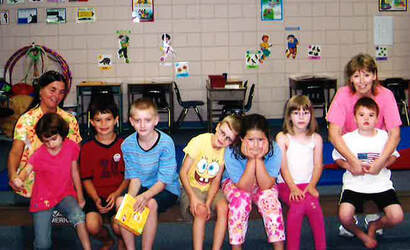 Linda (right), pictured with a Summer Boost Up class from 2006. Linda (right), pictured with a Summer Boost Up class from 2006. Today, Matthew is grown up, steadily employed at a local store for the last seven years, and the father of four-year-old Xander. “If it wasn’t for my experience with New Visions, with A Chance to Grow, I would not have been able to recognize early that Xander had challenges. “First thing is the speech, he wasn’t saying words and he’s not playing like a neurotypical toddler.” He was diagnosed with Autism, low on the spectrum and sensory seeking. She told Xander’s mom that she should bring him to ACTG for an occupational therapy evaluation. Today, Xander is receiving speech and occupational therapy at A Chance to Grow. While Matthew left New Visions for middle school, and has since gone on to lead a wonderful life, Linda remained at ACTG. It was her second career, after spending 25+ years in the telephone answering service, but, she says, “Boost-Up became my first love.” Over the years, her involvement has grown and changed, just as the agency has. Eventually, she also worked for the AVE program, Vision program, and as it expanded, the Clinical Services department as a clinical assistant. She has never formally retired because, as she says, this has become a family affair too. “The people here, they mesh so well together. I think it’s because the love and dedication they have in helping children be successful is a common goal. She says, because of that shared goal, “the staff is like family, too.” NOTE: Growing with the times, A Chance To Grow now offers insurance-based OT, Speech, Vision, and Audiology services, as well as private-pay Neuro Integrative, Neurofeedback and AVE services.
A Chance To Grow provides a wide range of services designed to help people at all levels of ability reach their optimal growth. Our focus on brain function affords us the opportunity to offer many approaches that are designed to complement each other and improve quality of life. One family has been with ACTG since its beginnings, and their journey with us – beginning with Boost-Up, the program that is the basis for most of our programming, to clinical services, to PCA services. Their story provides insight into the impact of everything we do.
When ACTG began to explore the use of neurofeedback, a brain-training approach, Michelle was excited, and before long, she launched what became our Neurotechnology Program. What is Neurotechnology?
What are Home-Based Services? Michelle has made sure that her son and grandchildren participated in everything ACTG had to offer them. “Scott had auditory therapy, vision therapy and speech/language therapy here. Mike and Kyrie too, and also OT. And Summer Boost-Up.” She also made sure they got a lot of neurofeedback. “I think it built more brain pathways. All the things ACTG does is trying to encourage brain pathways, Neurofeedback was one way to try that.”
Scott, Michael and Kyrie will always have challenges, but the therapies received thanks to Clinical Services, Home-Based Services and Neurotechnology have had a substantial impact. Scott initially was very slow in speech, and while he still has trouble, his ability to pick up vocabulary increased. Michael, who was visually impaired at birth, has improved, thanks to the stimuli provided in vision therapy. Both Michael and Kyrie thrived in good school programs and continue to learn. ACTG helped all three build the foundation for continued growth. “You say ‘developmental delays’ but I say ‘delay.’ Because they are still making strides,” says Michelle. Because of her experiences providing Boost-Up, Neurofeedback and PCA services for her family, Michelle does not think about them in terms of their limitations. “If you have a child with a disability, you have to use their strengths.” She notes, “It’s just a matter of standing back and giving them room to be who they are. Talk to them, give them the opportunity, that’s really important to them. Respect different ways of knowing, give them the opportunity to learn.” When he was in school, “Scott was so curious about so many things that I could never get anybody to understand. He couldn’t read the stuff, he couldn’t take the test, but he learned. He learns by listening. He had all these difficulties with our traditional ways of getting information. For example, he can look at a number, he can’t tell you the name of that number, but if I were to put a 5 and a 3 on the paper, he couldn’t write the 8, but if I put 7,8,9 underneath, he could circle the 8, he knew the concept. It’s the same with letters. Now he is a fount of information, he learned to get himself around the Internet without being able to read and write. Now he’s reading better than he ever has.” Like Scott, Mike and Kyrie keep on growing and learning, albeit in nontraditional ways. They love sports and have participated in Special Olympics, honing their skills with hours of practice. Kyrie, now 18, is still in a project-based school that allows him to explore his natural interests at his own pace, and where he can stay through transition. Mike, now 27, is interested in cooking. As with Scott, he knows a lot, but is less communicative than Kyrie. “His receptive information is much more than his expressive,” says Michelle. Thanks to ACTG’s Clinical and Neurofeedback Services, all three have continued to make gains, and thanks to our PCA services, they have been able to do so with the love and support of those who know them best, exploring the world around them and enriching the lives of everyone around them.
When he got to high school, “I did really great freshman year in classes, and then I found sophomore year to be a step up from freshman year. I began to have trouble meeting expectations. I was really struggling with honors classes that I was selected into. I had to drop from honors geometry and biology into the regular courses. Man, did that year suck! I also found that it was becoming harder to interact with other people socially, even at the lunch table, because I was so drained. You see the ones that are achieving, and then you look at yourself and you think, I’m doing the same exact thing, or working even harder. You feel a little less than, hopeless.” Getting tutoring at school and at home did little to help, nor did other evaluations. “I’d had eye tests and hearing tests before, but nothing had ever been caught, any physical exam came out fine. But things still weren’t working out well, and when it came time for the ACTs and SATs, we knew I needed more help. We found out about A Chance To Grow from a friend on the football team, his mother referred us to you. I was evaluated by Dr. Moroz [then ACTG’s developmental optometrist, now retired], who diagnosed me with convergence insufficiency exophoria, and she gave me eye exercises and visual therapy. Then they introduced me to Michelle [Koyama, Neuro Integrative Clinic Therapist], for therapy to help with the visual system even more.”
I could walk better, drive better, my hand/eye coordination and timing in things like playing tennis got better. I could do deadlifts smoothly with thrust when I was coming up, I could do squats and bench lifting better.“
His life got better in other ways too: “Sleeping dramatically improved, my mood improved, I was more optimistic.” Eventually, even Kevin’s fatigue began to evaporate. “I found work weeks to be really challenging, so I’d be working like 25-30 hour weeks and I’d be exhausted. Once I started visiting Michelle, it went from 30 to 100-hour weeks for 10 consecutive weeks and it was insane. I was able to become more in tune with what I was able to enjoy. I took on a lot of extracurricular activities. For example, last summer, I had five different things going on – a full time job with a residential real-estate content company, a part-time internship with an organic food company where I did digital marketing, three online classes to fulfill university requirements, various software/design classes for my own benefit, and rebranding/revamping an advertising club of which I was the president.”
Perhaps most important, Kevin feels like the work he has done with Michelle at ACTG has helped him reach his true potential. “I think the fact that I’m confident in starting a business right out of college, I think that says something. I mean, two years ago, I don’t think I’d have been at that level. My self-confidence has increased, my ability to collaborate, to be able to take a step back. Now I’m in tune. Before, I was just drained, but now, it produces energy. How crazy is that?”
In the mid-1980s, ACTG’s founders, Bob and Kathy DeBoer, brought in Dr. Robert Zwicky, a pioneer in vision therapy, which goes beyond basic eye examinations to look at how visual information is processed by the brain and how the body responds to it. This approach became the foundation of the clinic’s approach today. Dr. Zwicky brought in Dr. Janyce Moroz in 1989, a Developmental Optometrist whose training in reflexes brought a new dimension to the practice. She recognized, without reflex integration, there wouldn’t be a solid foundation to help higher-level visual skills function at a basic level. Over the years, other optometrists brought in additional perspectives. In the early 1990s, Dr. Garth Christiansen brought programs for binocular vision and dyslexia, while, from 1998 to 2019, Dr. Michele Taylor expanded the clinic’s capacity to provide full functioning eye exams and vision therapy. In 2011, powered by Dr. Moroz’s deep commitment to help children within the community, the ACTG Mobile Vision Clinic was started, providing greater access to vision services for young children from low-income families. Headstart provided basic screenings and referred children to the clinic. Dr. Moroz then performed developmental eye exams and provided recommendations for further services. Children who needed eye glasses would get them from the clinic if their caregivers approved. In 2019, after more than three decades of service at ACTG’s Vision Clinic, Dr. Moroz and the Vision Team retired. We knew it would take a special kind of doctor to fill her shoes, one who could carry on her commitment to improving lives through vision therapy and continue her legacy of providing innovative, highly effective services to children and adults. We are thrilled to announce that Dr. Shelby May, O.D. is joining the Vision Clinic on July 7. Dr. May is a Developmental Optometrist who, while thoroughly grounded in the multidisciplinary approach that has made ACTG’s clinic unique, will help bring us to the next level in providing vision services that address the whole person. 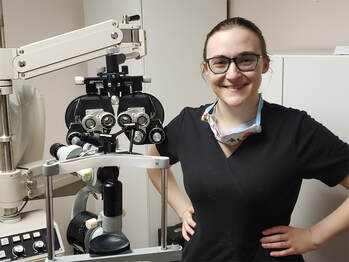 We’ll let her introduce herself: ACTG: Who are you? SM: I’m a Developmental Optometrist. Basically I’m an eye doctor that looks at the eyes and brain as a whole and tries to help those systems work together as well as I can. ACTG: Tell us about your training. SM: My dad is an optometrist, so I learned at his knee. I’m a fairly recent graduate from Southern College of Optometry in Memphis, TN, where I had the absolute privilege of working with brilliant people with really powerful thoughts on how developmental optometry works. Then I was lucky enough to have an elective class on special needs in optometry. It really changed how I approach therapy, mostly because it got me to look at vision as a whole, not just as an eyeball in a brain in a head, but an eyeball in a brain in a body in a process and a surrounding socioeconomic situation and a surrounding family. All those extra variables have to be part of the treatment. So instead of going broad and doing everything, I decided I would focus on vision therapy and just dive super deep, be a specialist essentially, and it’s made me very very happy. It's so much deeper even than I expected it to be because it goes so beyond eyes, which is why we’re here. ACTG: What is Developmental Vision? It’s important for people to know that vision is more than 20/20, is more than seeing clearly. It is seeing well, interpreting that, and then doing something with your body that is what you want, that creates a learning space. Developmental vision is first of all figuring out what the conversation is between your eyes and your brain and your body, then seeing what we can do to make it as strong as possible, and that manifests in a thousand ways. No two patients will ever look the same, so tailoring that program to you is the biggest part of success. ACTG: What is the prevalence of developmental vision issues, how many children are likely to have them? SM: The easy number for vision-related learning changes or disabilities, we say one in four. Now that does not mean that one in four children needs vision therapy. It means that one in four have some sort of hiccup in the road, either that child overcomes that hiccup, or has enough power essentially to reteach or learn on their own, but not everyone compensates and not everyone compensates in a healthy way. ACTG: Can you compare and contrast the approach used by Drs. Zwicky and Moroz and what you do? SM: Developmental optometry is really exciting field to be in right now because it’s changing at the speed of light. A lot of things that we were doing when Dr. Zwicky and Dr. Moroz were being trained were new theories at the time and not super-well researched, but we knew it worked, anecdotally. For example, Dr. Zwicky was well ahead of his time with his use of colored light therapy to treat the full body through the eyes. The basic concept is using color to change your sympathetic/parasympathetic balance. The body responds to color, the way you feel in a red room feels very different than the way you feel in a green room. When Dr. Zwicky was doing it, it was very broad – red, red orange, red blue, we’re going to mix these and it seems to do things on this. Since then, there's been plenty of research, and now we take that in very small narrow doses in very specific colors, which does very dramatic things to the body. I'm definitely looking forward to restarting that in a way that can both help my vision patients, and others. It can be wildly successful for OT patients as well. How can we make your session more powerful, let’s get you in the right mind and body set before we get you moving? ACTG: So part of your agenda is to do more to integrate vision therapy with other modalities? SM: Absolutely. We know this is going to take time, but so many times, an optometrist looks at a kid and thinks, “Gosh, you really need a little OT before we get started.” That’s not something that a stand-alone vision therapy office is going to be able to coordinate. And that’s the beauty of an interdisciplinary site like this. That’s so exciting for me because we talk a lot about the triangle of vision in my field -- this idea that the body builds the base for the eyes to function, and the eyes starts the conversation to get the body to go. The simple way to put that is “vision is motor and motor is vision.” It's so exciting because reflex talks to that in a way sometimes I can't. It does vision things in a body way that I can't necessarily do. ACTG: You have a talent for explaining complicated things in an easy way! SM: My whole job is to teach you what your brain is doing. If I can't communicate that, then I'm not doing my job. ACTG: What’s one thing you’d like our clients to know about you? SM: I am so genuinely excited to work with and come to know each one of you, your kids, and your whole families! I look forward to being involved in your development and your eye-brain connection! See you soon! Oliver is a happy, smart and creative eight-year-old with endless amounts of energy. He and his mom, Annie, first came to A Chance To Grow 18 months ago to address a myriad of physical and emotional development concerns. Early in Oliver’s life, Annie observed some unusual and worrisome behaviors. “From the time he could walk, he was falling down or crashing into things,” she said, “He’d walk on his toes and I didn’t know why.” “He had a great experience in preschool,” said Annie. “He was performing well in a school environment, he made friends and his teachers didn’t raise any serious concerns about his behavior or speech delays.” Despite this, Annie and her husband were still concerned with his communication issues and began seeking help.
They decided to have him tested by a Speech-Language Pathologist (SLP) prior to beginning kindergarten to see if he could qualify for special education services through the school district. The SLP who conducted the test didn’t hear what Annie heard and recommended that he not receive speech therapy. It was the first of countless obstacles in the family’s search to get help for Oliver. A second test, with a different SLP, found that he qualified for an IEP, and at the age of five, Oliver began weekly speech therapy sessions. “Kindergarten was OK for Oliver. His teacher knew how to head off his meltdowns, and he started physical therapy to help address his balance issues,” Annie recalled, “But there were red flags. I saw attention and impulsivity problems, no eye contact, and perseveration issues (the repetition of a particular response).” At the end-of-the-year IEP meeting, she fully expected the school’s administration to recommend Oliver be evaluated by a doctor. To her surprise, the administration unanimously confirmed he was ready for first grade. Annie was thrilled, but intuitively, she knew something was still off. Annie was a teacher at the private school Oliver attended. “He was starting first grade and I had my dream job and things were looking OK,” she said. “But that’s when the storm hit. The demands of first grade were beyond what Oliver was ready to take on. Our school didn’t have the resources to provide support for Oliver or for his teacher. Because of his frequent meltdowns and he’d often spend his days in the principal’s office.” Meanwhile, Oliver’s physical therapy progress ground to a halt. His therapists would have him do activities that were not developmentally appropriate, like throwing and catching a ball, and Oliver simply stopped participating because he couldn’t do it. “His first grade teacher commented that Oliver wasn’t comfortable in his body,” said Annie. “She was right. Something was wrong, but we just didn’t know what it was.” During the turmoil, a family friend named Jo Gascoigne suggested Annie look into an organization called A Chance To Grow, where Jo once served as a board member. Jo introduced Annie to Julie Neumann, MA/OTR/L, Director of Outpatient Services at A Chance To Grow, and together they discussed Oliver’s symptoms, health history and current predicament. “We discussed several options including modifying his school day, moving to a different first grade classroom, or returning to his former kindergarten class. They recommended Oliver regress back to kindergarten because he wasn’t developmentally a first grader yet,” said Annie. They explained that Oliver’s wild behavior was caused by a sensory processing disorder, meaning his brain was having trouble receiving and responding to information coming through his senses; specifically his proprioceptive system. His body’s way of seeking sensory input from his environment was causing his behavioral outbursts - he was unaware where his body was in space. “They told me about MNRI and how integrating his reflexes could build a foundation to overcome his emotional and physical delays, but it would take time,” said Annie. Time wasn’t on their side. Almost simultaneously, Annie and her husband met with Oliver’s teachers and school officials to discuss their options moving forward. They proposed the regression to kindergarten and were hopeful when his former teacher agreed, and the administrators and counselors gave their consent. The administration asked Annie to keep Oliver at home for a few days while they discussed the details of the transition. It appeared as though everything would work out, until his kindergarten teacher changed her mind because she felt that Oliver was too smart for kindergarten. She was also concerned about the social-emotional impact that regression could have on Oliver and his peers. What followed were three difficult weeks in which Annie and her husband fought to keep Oliver in school. “It was a fiasco,” she said, fighting back tears. “He was out of school the whole time and his self-esteem was so low. He thought he was naughty. He was afraid he wouldn’t get to learn subtraction. It just broke my heart.” Oliver was too smart for kindergarten but not physically or emotionally ready for first grade. What could she do? She did what was best for Oliver - she pulled him out of school and quit her job. She didn’t know what school he’d be at or what grade he’d be in, but she knew she had found A Chance To Grow -- a place that understood what Oliver needed to get better. “The staff said, it didn’t matter where Oliver was at developmentally, they would work with him,” said Annie. Shortly thereafter, she enrolled Oliver back into kindergarten at a new school, left his old therapists and began coming A Chance To Grow twice weekly. “They were so willing to meet Oliver where he was developmentally and knowledgeable about what he needed to move forward.” Oliver’s OT, Alyssa, addressed his basic reflexes at first, but quickly noticed he could also benefit from speech therapy to improve his social language skills. “She referred us to Carly, who saw what I saw during the evaluation - poor articulation, no eye contact,” said Annie. “Oliver knew he wanted to sound better, so we immediately began speech therapy to help him better communicate his needs at home and in school.” Carly works on what triggers his meltdowns, practicing expected behaviors in a safe environment by building and scaffolding his social skills. “He used to be scared to lose and it would trigger a meltdown, but he’s learning how to handle that frustration and manage those social situations,” said Annie. During Oliver’s sessions, Alyssa demonstrates techniques for Annie so she can work with him at home. They work for 30 minutes almost every night on his grounding reflex, helping him to feel more stable, both physically and emotionally. “Once he knew where his body was in space, he stopped falling down,” she said. “There were a few days when we didn’t do the activities and he became restless and couldn’t sleep. He asked me to do some body work and in no time he was back in bed.” Throughout the first six months at A Chance To Grow, Annie witnessed many breakthrough moments that proved they were in the right place. “Our little dog Maggie used to be terrified of Oliver, but now she comes up to him and he’s able to hold her. It’s just amazing. You can’t be skeptical when you see progress like that.” Annie says that one of the best parts is that everything he needs is under one roof. “Everyone is working together to help Oliver, sharing information on all aspects of his treatment plan. It’s just such a different approach from the other places we’ve been. It’s become a safe space for all of us.” Annie has also attends A Chance To Grow workshops, including S.M.A.R.T. training, to further her own understanding of what Oliver is going through and how she can help him continue making progress. As for school, Oliver completed kindergarten and moved into first grade this past year. At a recent parent-teacher conference, Annie asked about his meltdowns and the teacher had no idea what she was referring to. The teacher thought Annie was talking about a different student! These days, Oliver is able to do many activities he couldn’t do even a year ago, like riding a scooter without falling, throwing and catching a ball, and hanging on monkey bars - not because he’s practiced these activities, but because they’ve built the foundations to be able to advance his balance and motor skills. “It’s been a really long journey, but he’s the best he’s ever been,” said Annie, “It’s been absolutely life-changing.” It can be hard for parents or educators to fully understand the difference between the developmental age of a child and his or her actual age. We have expectations of how children should behave at certain ages, and when these expectations aren’t met, adults can often respond to the situation with the child’s actual age in mind, discounting where the child is developmentally. The right therapist and approach can make all the difference when it comes to helping children reach their full potential. “If you want to learn how you as a parent can help, then this is the place. The wealth of knowledge and resources they provide are amazing. We love being here and we’re all much happier.” 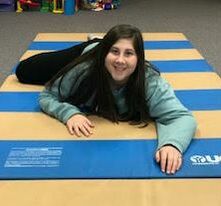 It’s not always immediately visible, but an early childhood health concern can have ripple effects through later stages of adolescent development. In situations like this, it’s vital to address foundational development that may have been obscured by physical needs. Grace was born with hip dysplasia. By the time she was10-years-old, she’d already had five surgeries to correct the issue. Following her last procedure, she was confined to a body cast for six weeks. The surgeries and subsequent immobility affected Grace physically, causing her to struggle with side-to-side movement, going up-and-down stairs and stunting her gross-motor skills. Grace underwent physical therapy throughout her childhood, but her mom, Anna, a special education teacher, noticed that Grace’s cognitive development was delayed as well. “As she got older, I noticed she couldn’t connect what she was learning in school,” said Anna. “I saw that she was easily distracted, struggled to read and had difficulty picking up normal social cues.” Upon relocating to the Twin Cities, Anna learned that Grace’s IEP did not apply to the Minnesota public school Special Education model, and that it was being revoked. Anna set out on a quest to discover the best long-term approach to help Grace reach her full potential. Anna was referred to A Chance To Grow by a friend and scheduled an appointment for an audiologist to evaluate Grace. “We learned that Grace had an auditory processing disorder,” said Anna. “She had difficulty comprehending auditory information which was causing some of her learning delays.” Instead of treating the auditory processing disorder with traditional therapy, the audiologist at A Chance To Grow referred Grace to the agency’s occupational therapy team to address her foundational level motor skills. After these skills are developed and strengthened, higher-level functions like auditory processing could be treated more successfully. 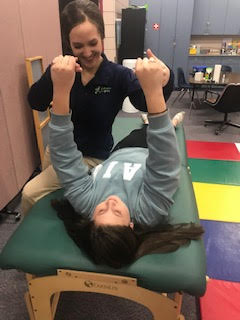 Shortly after Grace’s evaluation, she started coming to A Chance To Grow every other week for occupational therapy sessions. “She bonded immediately with her therapist, Alyssa,” said Anna. “They began doing a combination of therapies that focused on Grace ‘crossing the midline’ to help the left side of her body and brain better communicate with the right side.” Alyssa observed that Grace had low endurance, poor reflexes and core strength. To address this, she created a treatment plan around the archetype movements of MNRI (Masgutova NeuroSensory Reflex Integration), yoga and a few activities, like belly crawling, from ACTG’s S.M.A.R.T. approach. Anna even attended the S.M.A.R.T. workshop to implement the activities in her own classroom, as well as for Grace at their home. “Over the last two years I’ve seen amazing progress from Grace,” said Alyssa. “When we first started, she was hesitant to participate in any physically-active functions. She dreaded going on field trips at school because of the physical limitations she had. As we’ve worked together, though, and strengthened her reflexes and foundational levels, that anxiety has begun to fade away.” Anna says she’s also seen great strides in regards to Grace’s memory retention and executive functioning skills. Recently, Grace moved to a new school with better resources for students with learning disabilities. Anna says that the curriculum has been very complementary to the therapies provided by ACTG. “Despite her struggles, Grace is a happy, healthy kid who’s on the right track,” said Anna. “Alyssa understands Grace’s personality and Grace really looks forward to her therapy sessions. She’s always been a free spirit, and with Alyssa’s help, she’s gaining more confidence every day.”
I like to call it a brain-based therapeutic summer camp! Kids and adolescents would participate in a three-week daily program that included cutting-edge brain-based treatments and therapies. The best part was that everything was rolled up into a fun social experience so the kids were having a blast and happy, even though they were working hard five days a week.
We made tremendous progress each summer and reentered the next school year “notched up”; not only physically, but also in reading comprehension and processing speed. The bonus was that we also met other amazing families who we are still friends with today! From Boost Up Plus we transitioned into ongoing beneficial brain-based therapies such as Neurofeedback, Neurological Reorganization, vision therapy, and auditory integration therapy. As my son is becoming a young adult, the services and staff have grown with him; from improving speech deficits, processing disorders, and delayed motor skills early on to decreasing severe anxiety and sensory sensitivities as a teenager. At ACTG, we always find a solution. I would also like to mention how special the leadership team and professionals are at ACTG. Many of them have been here for years, which says a lot. They are passionate about their work and really care about our kids and families. They also are eager to learn and expand services as research surfaces. This is critical with complex disorders that involve the brain and neurological systems. So I guess it’s not a surprise to say that I enthusiastically joined the board several years ago and will be honored to continue serving as we move forward with our journey as a family and organization. A chance to grow; it describes our experience perfectly. I’m excited about the future; with my family, my special child and this amazing unique organization. - Julie, mother 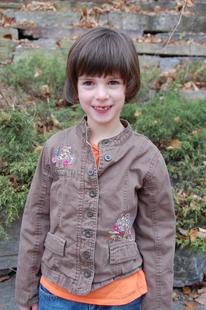 When Colette Friest traveled to Minnesota from Iowa to take her seven year old daughter, Lainey, to visit a learning center in Edina, she did not want Lainey to miss out on the occupational therapy and speech services she receives weekly while at home. A friend recommended she see our specialists at A Chance To Grow in place of her own while in Minnesota. Little did she know that our occupational therapy program would provide results that would change her daughter’s life forever. When Colette first arrived at ACTG to take Lainey to see Occupational Therapist (OT) Angela Rosales, she expected Angela would use the same traditional approach that she has seen OTs use with Lainey in the past. Instead, Angela used our own unique approach, which differs from approaches at other therapy centers because it uses brain-friendly methods such as Masgutova Neurosensorimotor Reflex Integration (MNRI)* to lay the foundation for motor function and everyday life skills. Colette says that being introduced to reflex integration therapy was one of Lainey’s most important and life-changing experiences. Before her time at ACTG, Lainey was nonverbal, had fine and gross motor issues, lacked focus and had difficulty with fine motor planning. Other challenges included reading and talking. OTs at ACTG have taken courses in MNRI and use the method often. Julie Neumann, ACTG OT, said that focusing on the integration of Lainey’s reflex patterns allowed Angela to lay the foundation necessary for Lainey to develop higher-level motor and everyday life skills. As a result, Lainey’s life has been drastically changed. “We have seen huge differences in our daughter in just the two months that we have been doing reflex integration, and the fact that ACTG has OTs who can do these reflexes with kids can make a big difference in children’s lives. Many parents are like us and don’t have time to go to conferences and learn things like reflex integration, so this is huge. If it wasn’t for Angela introducing me to reflex integration at ACTG, we wouldn’t know about it and we’d still be stuck,” Colette said. When asked to reflect on her time working with the Friests, Angela said, “They are such a solid family. Colette has a fearless approach when helping her daughter succeed. Her initiative and ambition are very impressive.” For eleven weeks, Colette and Lainey stayed at a hotel Monday through Friday, traveling back home to Iowa on most weekends. During her time at ACTG, Lainey also saw Bridget Russ for Speech Therapy and Becky Aish for Audio Visual Entrainment and EEG Biofeedback. Colette said these additional interventions further strengthened Lainey’s ability to focus, talk and overall, act more mature. Now, over five months later, Lainey’s verbal skills continue to improve. Finally, Colette is able to read stories to her daughter from beginning to end, and Lainey actually follows along! “We had a great experience at ACTG. I want other families to hear about it. Lainey has been in therapy since age two, and we have seen more improvements in two months than we saw in five years. If parents really want to do something that can be life-changing for their child, I can’t stress highly enough how much of a difference A Chance To Grow’s programs can make.” Another thing Colette said she loves about ACTG is the fact that our Founder and Co- Director, Bob DeBoer, has been in her shoes. “He had a special needs child himself and understands where we’re coming from. That makes a huge difference. Not many therapy places start with a founder who had a special needs child and knows exactly what we’re going through,” Colette said. *The Masgutova Method (MNRI) focuses on the important role of children’s automatic motor reflexes and underlying neurosensorimotor mechanisms. Occupational Therapists trained in the Masgutova Method learn to understand the difference between automatic motor reflexes and learned motor reflexes. 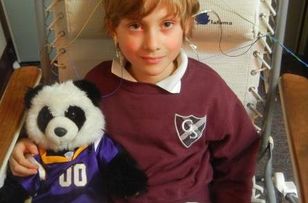 “All therapists are there for the children’s best interest. It’s obvious to see. They have no other motives but that.” —Emma Milliken, Josh’s mom In Fall of 2010, Emma Milliken experienced something that many parents do. Her son’s kindergarten teachers told her and her husband that their son, Josh, struggled to follow directions, write and pay attention. Josh’s teachers suggested they take him to the doctor to be evaluated and possibly put on ADHD medication. As motivated parents and natives of England, the Millikens felt skeptical about this route for their child. "American culture is to ‘go to the doctor and get drugs,' but that is not our way,” Emma said. While researching other options and talking with other parents, Emma became aware of Vision Therapy and its amazing results. Emma opted for this route; first taking Josh for a Vision Therapy evaluation at another site. She also decided to have Josh evaluated by A Chance To Grow’s Audiologist, Dr. Sara Cook. During Josh’s evaluation with Cook, Emma asked about the difference between A Chance To Grow’s Vision Therapy program and the other program where Josh had received an evaluation. “Vision Therapy at A Chance To Grow is very child-specific rather than a formal, ‘cookie cutter’ program that you will see at most other places,” Cook said. Recognizing this and the convenience of having all her son’s needs met under one roof, Emma had Josh assessed for Vision Therapy at A Chance To Grow. After the exam, The A Chance To Grow optometrists concluded that Josh had unintegrated primitive reflexes and suggested Occupational Therapy. While Vision Therapy was an option, it was likely the desired results would not occur without first working on Josh’s primitive reflexes. Impressed with the honesty of A Chance To Grow’s staff and motivated to do everything she could to help her son, Emma took Josh to see Julie Neumann, A Chance To Grow Occupational Therapist. Neumann informed her that Josh’s left and right brain were only integrated 20%. In January 2012, Josh began working with Neumann. “Watching my son work so hard and struggle with such basic things has been a humbling and challenging experience for me,” Emma said. Seeing the hurdles ahead, Emma and her husband chose to pull Josh from school to concentrate on getting him on track for the following year. After about eight months of vigorous OT work with Neumann, Auditory Therapy with Dr. Sara Cook and intense reflex work at home, Josh returned to school. “The teacher told me that Josh is a completely different child,” Emma said with tears in her eyes. Josh’s teacher even asks him questions like, “Remember when we did this same assignment last year?” And he’ll respond, “Yes, but that was when my eyes weren’t working.” Extremely happy with her family’s experience at A Chance To Grow, Emma has now placed Josh in EEG Biofeedback with Neurotechnology Director Becky Aish, and he is set to finish his OT work with Neumann in December! “He’s confident and happily on the same level as his peers,” Emma said. “My heart goes out to parents who don’t realize ACTG is here. All therapists work for the child’s best interest. It’s obvious to see. They have no other motives but that. This program here is amazing and more people should know about it. Josh can feel the difference A Chance To Grow has made within himself.” Thea entered first grade just after her seventh birthday. She was very excited about learning to read. Her parents had no reason to believe that she would have any trouble learning since she had flourished both academically and socially in kindergarten. Her accomplishments up to this point were astounding.
She was born prematurely and required oxygen and intravenous nutrition during her first three years of life. Early in her infancy, doctors said she was both blind and deaf. Later, she was properly diagnosed with dyspraxia and learned to communicate through sign language. She began speaking by her third year and each passing day she became closer and closer to being “on track” developmentally. When she entered school at the age of six, Thea seemed to be a perfectly normal kindergartner. Then came the first grade. At the first parent-teacher conference, Thea’s teacher informed her parents that there were signs of serious trouble. Thea was exhibiting learning, behavioral and attention problems. The problems were so significant her teacher did not know where one started and the other left off. Her parents were devastated. Even worse, Thea was very upset and became frustrated as she kept falling behind the other students. Her medical team and school began testing. The test results indicated that Thea also had dyslexia and her frustration was creating the behavior problems. She was eventually placed on an individual education plan while beginning special education and occupational therapy in school in school. At this time, Thea’s mother happened to attend a lecture by Carol Kranowitz, author of The Out of Sync Child. The free lecture was held at A Chance To Grow (ACTG). She had never heard of the organization and decided to take a tour after the lecture. “I was so impressed,” commented Paula. “The very next week I scheduled an appointment for Thea at ACTG’s vision department. Thea received a complete eye exam and then a developmental evaluation in order to identify visual integration problems. The results clearly indicated that Thea had difficulty processing visual material. Thea’s parents decided to enroll her in ACTG’s vision therapy program. She received individual vision therapy throughout the following summer and during the first several weeks of second grade. Paula recalls, “The staff that worked with Thea were incredible! They bonded with her and were able to bring out the best in her in a very nurturing way. She began to happily look forward to her vision therapy. Her gains were becoming more evident and each accomplishment of hers was celebrated along the way.” Despite Thea’s gains, her mother witnessed something even more amazing. Thea, who had struggled to print her name legibly, began writing short stories for everyone to enjoy! Here was a young girl who had struggled to read the simplest of primers, who began checking out chapter books from the library. As the new school year progressed, Thea was up to grade level work in all areas. “Her special education teacher told us that it was a special, but rare treat to release a young student from special education during the elementary years”, remarked Paula. “The teacher told us that it is incredibly rare to have such a young child make as much progress as Thea had done in such a short amount of time.” It was clear that the vision therapy played a major role in her success. Her mother concluded by saying, “We are all so proud of Thea and so thankful for the people at A Chance To Grow. They have helped her become the audaciously, securely intelligent child that she is!” Justin the Superstar! Before visiting A Chance To Grow, Justin would hesitate in the middle of words when trying to speak, which made it hard for anyone else to understand him. In first grade, he didn’t know all of his sounds and reading and writing frustrated him.
In October of his first grade year, Justin was falling behind and began to hate school. He felt he was stupid. It brought tears to his mother’s eyes. In November of that year, she attended the S.M.A.R.T. Workshop and met Cheryl Smythe, Assistant Director of the Minnesota Learning Resource Center (MLRC). Cheryl encouraged her to have his vision and auditory processing skills tested at A Chance To Grow. The testing told her he was below age level in much of his developmental vision, so she started doing boost up (S.M.A.R.T.) activities at home with him. He worked really hard on Creeping, Crawling, Spinning and Rolling, enabling him to move onto vision therapy activities. His mother also started him on the Hemispheric Specific Auditory Stimulation (HSAS) (now JIAS) program at A Chance To Grow to help with his auditory processing. Within three weeks of starting HSAS, Justin was able to sing all the words at his Christmas program on beat and with the other children-- something he hadn’t been able to do before. WOW! First grade was a struggle, but Justin had made it through. When second grade started, the school tested him at a pre-primer reading level. Him and his mother continued to work on his vision and auditory issues. He showed real strength in math and by the end of second grade he was at a 1.7 reading level. This was almost an improvement of two grades! By the end of his second grade school year, Justin was done with vision therapy and was put onto maintenance for the HSAS program. By this point, Justin’s articulation had improved so much that many people didn’t know he even had an articulation delay. In third grade, he was still struggling with writing and still behind in reading. He received Title 1 services and worked hard at home. Justin did score ‘proficient’ on the Wisconsin state reading test that March, but things still didn’t seem quite right. He was having a hard time following along and keeping up in the classroom. A Chance To Grow checked his ears again and found he had regressed on his auditory processing skills. After also having his reflexes checked by Dr. Moroz at A Chance To Grow Vision Services, it was found that he still had some primitive reflexes interfering with his ability to write and maintain the progress he had made in some of his prior therapy. Within weeks of starting the reflex therapy at home, he commented on how much “easier” writing was. Then, when given the choice to read, write or do math (his favorite), he chose writing. He wrote three stories that summer. This was great for a child who at one time had a hard time writing one word! Justin, you are a superstar! |
success story category:
All
WE LOVE HEARING FROM YOU! |

